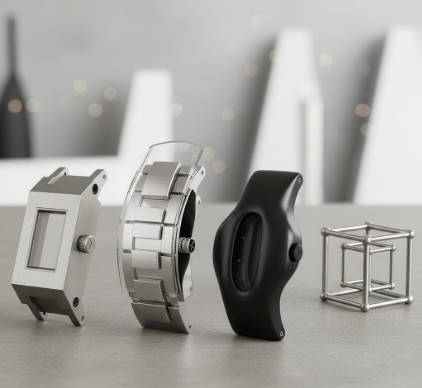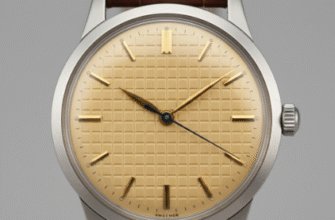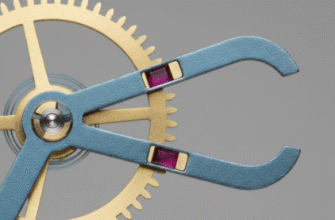The humble watch case, for much of its history, was a purely functional object. It was a simple, often round, container designed with a single purpose: to protect the delicate mechanical movement within from the harsh realities of the outside world. Yet, to look at a contemporary timepiece is to see something far more complex. It’s a sculpture for the wrist, a play of light and shadow, a statement of intent. This radical transformation from utilitarian vessel to architectural object owes a profound debt to the visionaries of architecture and industrial design, who reimagined the watch case as a canvas for geometric expression and ergonomic innovation.
The seeds of this revolution were sown in the early 20th century, most notably within the fertile grounds of the Bauhaus school. This German art school championed a radical new philosophy: that form must follow function. This wasn’t merely about aesthetics; it was a holistic approach that sought to unify mass production with artistic vision, creating objects that were both beautiful and perfectly suited to their purpose. This ethos found a perfect vessel in watch design, a field where precision and utility are paramount.
Perhaps the most famous proponent of this philosophy in horology was
Max Bill. An architect, artist, and designer who studied at the Bauhaus, Bill’s work for the German watchmaker Junghans in the 1950s and 60s remains a masterclass in minimalist design. His watch faces are studies in clarity, with clean lines, unobtrusive numerals, and a perfect sense of proportion. But his influence extended to the case itself. The Max Bill watches feature thin, elegant cases with minimal bezels, designed to draw the eye directly to the dial, the functional heart of the watch. The geometry is pure and logical, with every curve and angle serving the ultimate goal of legibility and understated elegance. This Bauhaus approach stripped away the ornate, decorative elements of earlier eras and replaced them with a rational, geometric purity that still feels modern today.
The Architect as Watch Designer: Gérald Genta’s Revolution
While the Bauhaus laid the philosophical groundwork, it was a single, brilliant designer who arguably ignited the modern era of watch case design:
Gérald Genta. Though a trained jeweler and designer, not an architect, his process and vision were deeply architectural. He didn’t just design watches; he constructed them, creating integrated forms where the case, bezel, and bracelet flowed into a single, cohesive structure. His work in the 1970s single-handedly created a new category of timepiece: the luxury sports watch.
His most famous creation, the
Audemars Piguet Royal Oak from 1972, is a prime example. The brief was to create a waterproof steel watch with an unprecedented design. Genta found his inspiration in the exposed bolts of a classic diver’s helmet. He translated this industrial, functional element into the Royal Oak’s most defining feature: an octagonal bezel secured by eight visible, hexagonal gold screws. This was revolutionary. It took a functional element, the screw, and made it the primary aesthetic feature. The case itself was not simply a round puck but a complex interplay of surfaces, with sharp, angular lines and a seamless transition into an integrated bracelet. The finishing, a meticulous brushing contrasted with polished chamfers, was designed to catch the light, highlighting the case’s complex geometry in a way no simple polished surface could.
Just a few years later, Genta repeated his success with the
Patek Philippe Nautilus. Here, the inspiration was the porthole of a transatlantic liner. The case geometry reflects this with two distinctive “ears” on either side, echoing the hinges of the porthole. Again, the design was integrated, with a fluid shape that merged case and bracelet. Genta’s genius was his ability to draw inspiration from the wider world of engineering and architecture, translating macro-scale structures into micro-mechanical art. He proved that a watch case could have a narrative and a powerful, geometric identity all its own.
Gérald Genta’s approach fundamentally altered the perception of a watch’s value. By creating a complex, beautifully finished steel case, he elevated the design and craftsmanship of the exterior to be as important, if not more so, than the precious metal it was made from. His work established the idea that the architecture of the case itself could be the primary luxury. This philosophy paved the way for the entire luxury sports watch category.
The Industrial Designer’s Touch: Ergonomics and Materials
Parallel to the influence of architectural concepts, the principles of industrial design have had an equally profound impact on watch case geometry. Industrial design is fundamentally about the user experience, focusing on how an object feels, functions, and integrates into a person’s life. This discipline brought a new focus on ergonomics and material science to the world of horology.
Where an architect might focus on the grand statement and structural integrity, an industrial designer obsesses over the minutiae of interaction. This translates to watch cases with lugs that curve gently to hug the wrist, crowns that are easy to grip and operate, and a balanced weight distribution that makes a watch comfortable to wear all day. Designers like
Jorg Hysek and, later, brands like Hublot and Richard Mille, pushed this envelope further. They created multi-part, sandwich-style cases that allowed for a combination of materials—titanium, ceramic, carbon fiber, rubber—each chosen for its specific properties of lightness, durability, or tactile feel. This layered, modular approach is pure industrial design.
The choice of material directly influences the case’s geometry. Forging a case from carbon fiber or milling it from a block of high-tech ceramic allows for shapes and angles that would be impossible or impractical to achieve in traditional steel or gold. We see this in the tonneau-shaped cases of Richard Mille, which are skeletonized not just for aesthetics but to reduce weight to an absolute minimum, or the sharp, faceted lines of Rado’s ceramic watches, a direct result of the material’s properties. This focus on materiality and user-centric design has pushed the geometry of the watch case into ever more complex and daring territory, transforming it into a high-tech object that is as much about performance and comfort as it is about telling time.









